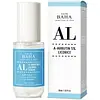What's inside
What's inside
 Key Ingredients
Key Ingredients

 Benefits
Benefits

 Concerns
Concerns

 Ingredients Side-by-side
Ingredients Side-by-side

Water
Skin ConditioningButylene Glycol
HumectantAlpha-Arbutin
AntioxidantGlycerin
HumectantIsononyl Isononanoate
Emollient1,2-Hexanediol
Skin ConditioningAloe Barbadensis Leaf Extract
EmollientPanthenol
Skin ConditioningAllantoin
Skin ConditioningDipotassium Glycyrrhizate
HumectantSodium Hyaluronate
HumectantCentella Asiatica Extract
CleansingCamellia Sinensis Leaf Extract
AntimicrobialRosa Rugosa Flower Extract
Skin ConditioningCucumis Melo Fruit Extract
Skin ConditioningLoess Extract
Skin ConditioningGlycyrrhiza Glabra Root Extract
BleachingMadecassoside
AntioxidantAsiaticoside
AntioxidantMadecassic Acid
Skin ConditioningAsiatic Acid
Skin ConditioningCeramide NP
Skin ConditioningBisabolol
MaskingCetearyl Olivate
Sorbitan Olivate
EmulsifyingCetearyl Alcohol
EmollientCaprylic/Capric Triglyceride
MaskingCaprylyl Glycol
EmollientTropolone
Skin ConditioningDimethicone
EmollientCarbomer
Emulsion StabilisingTromethamine
BufferingWater, Butylene Glycol, Alpha-Arbutin, Glycerin, Isononyl Isononanoate, 1,2-Hexanediol, Aloe Barbadensis Leaf Extract, Panthenol, Allantoin, Dipotassium Glycyrrhizate, Sodium Hyaluronate, Centella Asiatica Extract, Camellia Sinensis Leaf Extract, Rosa Rugosa Flower Extract, Cucumis Melo Fruit Extract, Loess Extract, Glycyrrhiza Glabra Root Extract, Madecassoside, Asiaticoside, Madecassic Acid, Asiatic Acid, Ceramide NP, Bisabolol, Cetearyl Olivate, Sorbitan Olivate, Cetearyl Alcohol, Caprylic/Capric Triglyceride, Caprylyl Glycol, Tropolone, Dimethicone, Carbomer, Tromethamine
Aloe Barbadensis Leaf Extract
EmollientPropanediol
SolventArbutin
AntioxidantNiacinamide
Smoothing1,2-Hexanediol
Skin ConditioningHydroquinone
StabilisingCitric Acid
BufferingSodium Citrate
BufferingSodium Hyaluronate
HumectantSalicylic Acid
MaskingKojic Acid
AntioxidantLactic Acid
BufferingHamamelis Virginiana Leaf Extract
Skin ConditioningRosmarinus Officinalis Extract
AntimicrobialEucalyptus Globulus Leaf
Skin ConditioningThymus Vulgaris Extract
PerfumingAspalathus Linearis Extract
Skin ConditioningDisodium EDTA
Aloe Barbadensis Leaf Extract, Propanediol, Arbutin, Niacinamide, 1,2-Hexanediol, Hydroquinone, Citric Acid, Sodium Citrate, Sodium Hyaluronate, Salicylic Acid, Kojic Acid, Lactic Acid, Hamamelis Virginiana Leaf Extract, Rosmarinus Officinalis Extract, Eucalyptus Globulus Leaf, Thymus Vulgaris Extract, Aspalathus Linearis Extract, Disodium EDTA
 Reviews
Reviews

Ingredients Explained
These ingredients are found in both products.
Ingredients higher up in an ingredient list are typically present in a larger amount.
1,2-Hexanediol is a synthetic liquid and another multi-functional powerhouse.
It is a:
- Humectant, drawing moisture into the skin
- Emollient, helping to soften skin
- Solvent, dispersing and stabilizing formulas
- Preservative booster, enhancing the antimicrobial activity of other preservatives
Aloe Barbadensis Leaf Extract is an extract of the leaves of the aloe, Aloe barbadensis, Liliaceae.
Aloe is one of the most well-known natural soothing ingredients, and for good reason. It’s full of water and has a cooling, calming effect on the skin, especially when it’s sunburned, itchy, or irritated. Aloe also helps your skin stay hydrated and smooth by mimicking what healthy skin naturally produces. On top of that, it contains vitamins and nutrients that support skin recovery.
It doesn’t protect you from the sun, but it can help your skin bounce back after too much time in it.
Let’s get into the details:
Aloe contains antioxidant Vitamins A, C, and E, which help fight off free radicals (unstable molecules from things like pollution that can damage your skin).
It’s also rich in polysaccharides, which are natural sugars that help hydrate the skin by acting like the skin’s own moisturizing agents. These, along with other sugars like monosaccharides, help form a protective barrier that locks in moisture.
Aloe works as both a humectant and an emollient. That means it draws water into the skin (humectant) and helps trap it there (emollient), making it an effective natural moisturizer.
You’ll also find a mix of other skin-supporting ingredients in aloe, including folic acid, choline, calcium, amino acids, fatty acids, and even Vitamin B12.
Out of the 420+ species of aloe, Aloe barbadensis is the most widely used in skincare products thanks to its gentle yet effective properties.
There are over 420 species of aloe but Aloe Barbadensis is the most commonly used for topical products.
Learn more about Aloe Barbadensis Leaf ExtractSodium Hyaluronate is hyaluronic acid's salt form. It is commonly derived from the sodium salt of hyaluronic acid.
Like hyaluronic acid, it is great at holding water and acts as a humectant. This makes it a great skin hydrating ingredient.
Sodium Hyaluronate is naturally occurring in our bodies and is mostly found in eye fluid and joints.
These are some other common types of Hyaluronic Acid:
Learn more about Sodium Hyaluronate